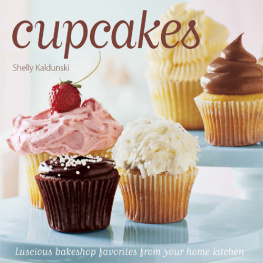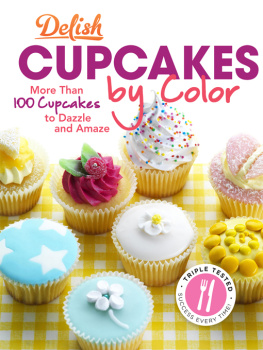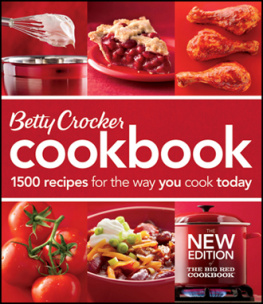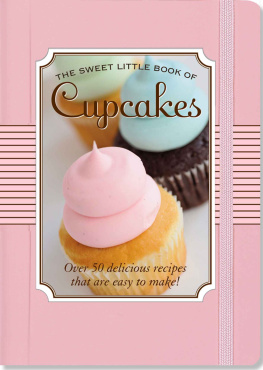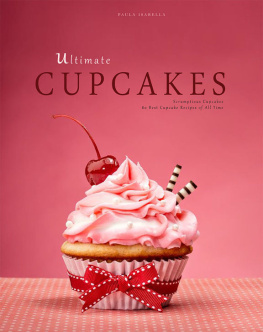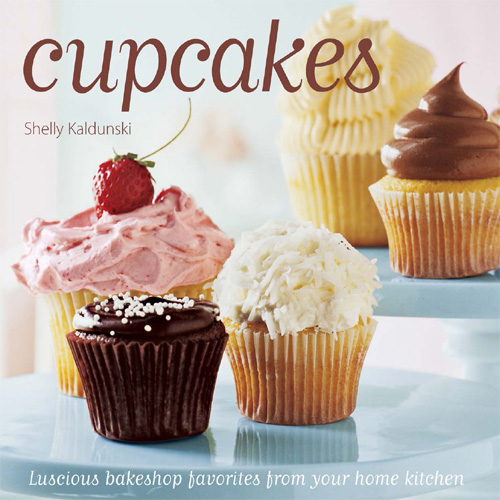All About Cupcakes
NAME THAT CUPCAKE
Two theories exist about how cupcakes came to be called cupcakes. One theory supposes that they got their name because they were baked in small cups or tea cups to create individually sized cakes. The other theorizes that cupcakes, like pound cakes, were named after the formula or recipe that was used to make them: one cup each of butter, sugar, flour, and eggs.
Once upon a time, cupcakes were treats just for kids. With colorful sprinkles and bright, brassy decorations, cupcakes were meant to enchant the youthful eye, and the sugary cake and frosting were made to tickle kids insatiable sweet tooth. Whats more, cupcakes didntand still dontrequire the formality of a fork to eat and theyre baked in pint-sized portions so no sharing is ever required. As a kid, whats not to love about cupcakes?
But at long last, adults have begun to realize what theyve been missing and cupcakes popularity has soared. Chic, stylish cupcakes can be found in boutique bakeries, on trendy A-list restaurant menus, and even at fashionable nuptials. Theres no rule that says its necessary to have a special occasion to enjoy cupcakes. Packed into a lunchbox as a surprise for an unsuspecting student, dished up as a weeknight dessert, or served to friends after a casual supper, cupcakes are welcome little indulgences at any time.
In this book, you will find cupcake recipes for every palate. For traditionalists there are . And, of course, you will find ideas for decorating your cupcakes with modern minimalism, elegant flourishes, and colorful exuberance.
Ingredients
HOW TO TOAST NUTS
Its almost always a good idea to toast nuts before using them. Toasting deepens the flavor, heightens the aroma, and crisps the texture of just about any type of nut. Whole or chopped nuts can be toasted on the stovetop, but if youre baking cupcakes and the oven is already on, simply scatter the nuts in a single layer on a baking sheet and toast them in the oven for about 10 minutes. Be sure stir them once or twice so they toast evenly. Once the nuts become fragrant, keep a close watch so that they dont scorch. Let them cool and theyre ready to use.
BUTTER Theres nothing like the richness of pure butter in baked goods. For cupcakes and frostings, be sure that the butter you use is unsalted. Unsalted butter allows you to have full control over the amount of salt that goes into a recipe. On the package, unsalted butter is sometimes labeled as sweet butter. For the best results, do not use butter substitutes: In addition to affecting flavor, butter substitutes may also affect the cupcakes texture.
FLOUR There are two types of flour commonly used in cake making: all-purpose flour and cake flour. All-purpose flour has a higher protein content than cake flour and, by comparison, yields a firmer cake texture. Cake flour is often used in recipes when a plush, ultra-tender cake texture is desired. If cake flour is not available, for every 1 cup of cake flour needed, use cup ( cup plus 2 tablespoons) all-purpose flour plus 2 tablespoons cornstarch.
SUGARS Sugar gives cupcakes their sweetness. It also tenderizes, adds moisture, and promotes browning during baking. Granulated sugar is the kind most often used in baking because it has a neutral flavor. Brown sugar contains molasses, which makes it moist and gives it caramel-like nuances. Its great for use in recipes that contain assertive flavors. Confectioners sugar, also called powdered sugar, is granulated sugar that has been pulverized to a fine powder and combined with cornstarch. Confectioners sugar is often used in glazes, frostings, and for dusting sweets just before serving.
EGGS The recipes in this book, like most others, were developed with large eggs. If the eggs need to be separated, its easier to do so when theyre cold and the yolks are firm. If youll be whipping the egg whites, they must be free of bits of yolk and fat, so use care when separating the eggs, and be sure that the bowl and beaters that you use to whip the whites are clean.
BAKING SODA AND BAKING POWDER Baking soda and baking powder are leavening agents that help cupcake batter rise during baking. Baking soda is used when the batter contains an acidic ingredient like buttermilk or sour cream. Baking powder can be used in the presence or absence of an acidic ingredient. Before using an already-opened container of baking powder, check the expiration date and replace it if its expired, as old baking powder often does not provide proper lift.
Supplies
FOOD COLORING
Standard liquid food coloring from the supermarket comes in very basic colors that can be combined to create other colors. Food coloring pastes and gels are sold in specialty stores, and come in a wide array of colors so that mixing is unnecessary. These pastes are very highly concentrated so only tiny amounts are neededfor example, to tint a buttercream, dip the tip of a paring knife into the paste and stir in the color. Keep in mind that subtle hues are more appealing than bright ones, and that color can always be added, but it cannot be subtracted.
ELECTRIC MIXER An electric mixer is a kitchen workhorse for bakers. Many cupcake batters can be made without one, but for most types of frosting, an electric mixer is an important piece of equipment. A standing mixer is more efficient than a hand mixer because it leaves the bakers hands free to do other tasks, and it has a motor that can power through heavy batters and frostings. The recipes in this book were developed using a standing mixer.
CUPCAKE LINERS Cupcake liners are available in solid colors, prints, pastel hues, bold tones, and made of shiny foils. If the muffin pan is well greased, its not necessary to use cupcake liners, but liners ensure effortless removal from the muffin pan, and make it easy to handle the cupcakes when frosting them. They also make clean-up a snap. Some of the filled cupcakes in this book were developed without cupcake liners.
MUFFIN PANS Standard muffin pans have twelve cups, each with a -cup capacity. Jumbo muffin pans have six cups of -cup capacity. Mini muffin pans have twenty-four tiny cups that hold about 3 tablespoons apiece. Most of the cupcakes in this book are baked in standard muffin pans, with just a handful baked in jumbo or mini muffin pans.
ICE CREAM SCOOP Thin, pourable batters are easy to divide between muffin pan cups, but for thick, heavy batters, an ice cream scoopin particular, a spring-loaded ice cream scoopcomes in handy. With a spring-loaded scoop, you can easily measure out the batter and drop it cleanly into the muffin pan cups with just the press of the thumb.
SILICONE SPATULA Silicone spatulas are indispensable kitchen tools. With wide, flexible blades, silicone spatulas scrape out every last bit from the bowl and easily smooth over the batters surface. Unlike rubber spatulas, silicone spatulas are heat- and stain-resistant, and resist picking up food odors. Theyre available in a range of sizeshaving a large, medium, and small silicone spatula ensures that you have one suited to any baking or cooking task.

